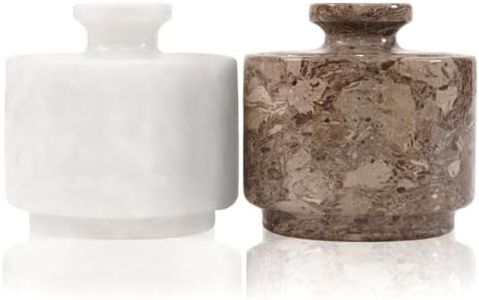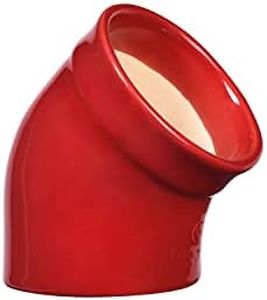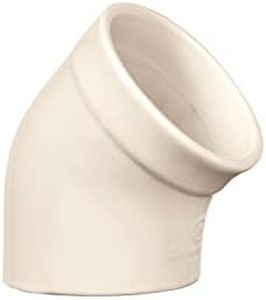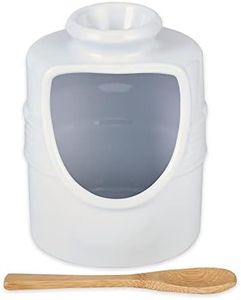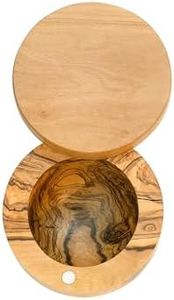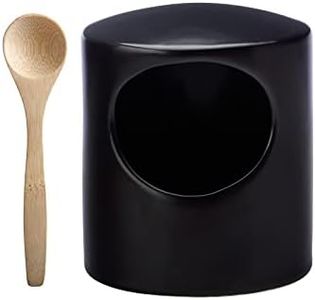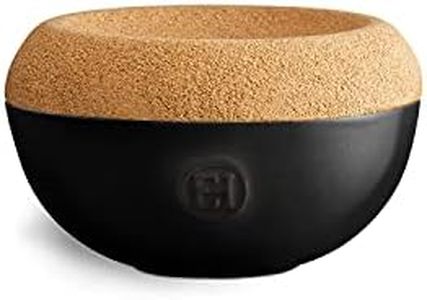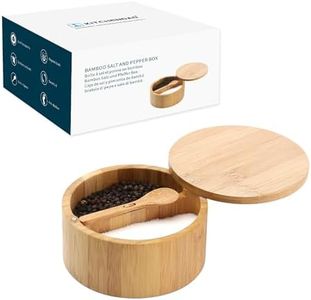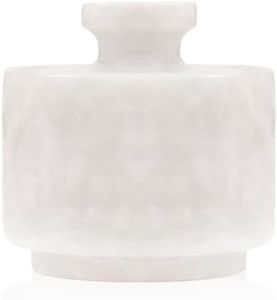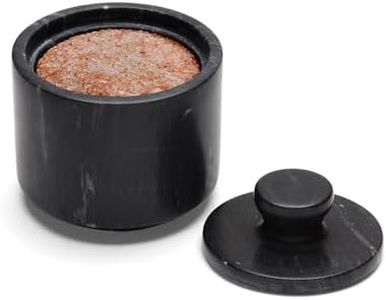We Use CookiesWe use cookies to enhance the security, performance,
functionality and for analytical and promotional activities. By continuing to browse this site you
are agreeing to our privacy policy
10 Best Salt Pigs
From leading brands and best sellers available on the web.Buying Guide for the Best Salt Pigs
When shopping for a salt pig, the goal is to find a container that keeps your salt fresh, easy to reach, and free from moisture or contaminants. Salt pigs are typically kept on the kitchen counter for quick pinching or scooping while you cook. It’s important to consider how often you cook, the amount of salt you typically use, and your kitchen setup when choosing the best salt pig for your needs.MaterialMaterial refers to what the salt pig is made from, such as ceramic, stoneware, porcelain, glass, stainless steel, or even wood. This spec is important because it affects how well the salt is protected from moisture, how easy it is to clean, and how durable the container will be. Ceramic and stoneware are popular because they absorb some moisture and help keep salt dry, while stainless steel or glass are easy to clean but might not offer as much protection from humidity. If you live in a humid environment or want the best moisture protection, go for opaque materials like ceramic or stoneware. If you prefer seeing how much salt is left or want a modern look, glass or clear acrylic could work. Your cooking habits, kitchen humidity, and style preferences should guide your choice.
Size/CapacityThis spec refers to how much salt the pig can hold. It’s important because a larger pig means fewer refills but takes up more space, while a smaller one is compact but may need to be topped up more often. Salt pigs can range from small enough for individual use, holding a few ounces, to large enough for frequent bakers and cooks who go through a lot of salt. Think about how much salt you use each week and how often you want to refill. A smaller size is great for occasional cooks or small kitchens, while a larger size suits those who cook often or need frequent, easy access to salt.
Opening DesignThe opening design describes how accessible the salt is in the pig—some have wide open mouths, others have a partially covered or hooded shape to shield salt from kitchen splashes or dust. This is important for both practicality and hygiene. A wide opening makes it easy to reach in with fingers or a spoon, ideal for frequent use, but leaves salt more exposed. A hooded or partially covered opening gives better protection from debris or moisture. If you want convenience above all, a wide opening works best; if you want to keep your salt cleaner for longer, consider designs that offer some cover.
Ease of CleaningEase of cleaning refers to how simple it is to wash and dry the salt pig, important because salt attracts moisture and residue. Some materials, like glazed ceramics or stainless steel, are dishwasher safe, while unglazed or wooden pigs should be cleaned by hand. Look for smooth, simple shapes if you want less hassle, especially if you plan to change salts or clean frequently. If you prefer minimal maintenance, pick a model that lists itself as dishwasher safe or easy to rinse and dry.
Moisture ControlMoisture control refers to the salt pig's ability to keep humidity and clumps out of your salt. Some materials, like unglazed ceramic or stoneware, can absorb a bit of moisture and help keep the salt loose, while other pigs might include a simple ventilated design. If you live in a humid climate or your kitchen is often steamy, prioritize moisture-absorbing materials or look for a salt pig specifically described as being good at preventing clumping.
Accessories/UtensilsSome salt pigs come with an included spoon or scoop, which can be handy for measuring salt without using your fingers. If you prefer not to reach in with your hands or plan to use different types of salt, a salt pig with an included or integrated spoon can be more sanitary and convenient. If you already have spoons or like to pinch salt by hand, this may not be necessary.
